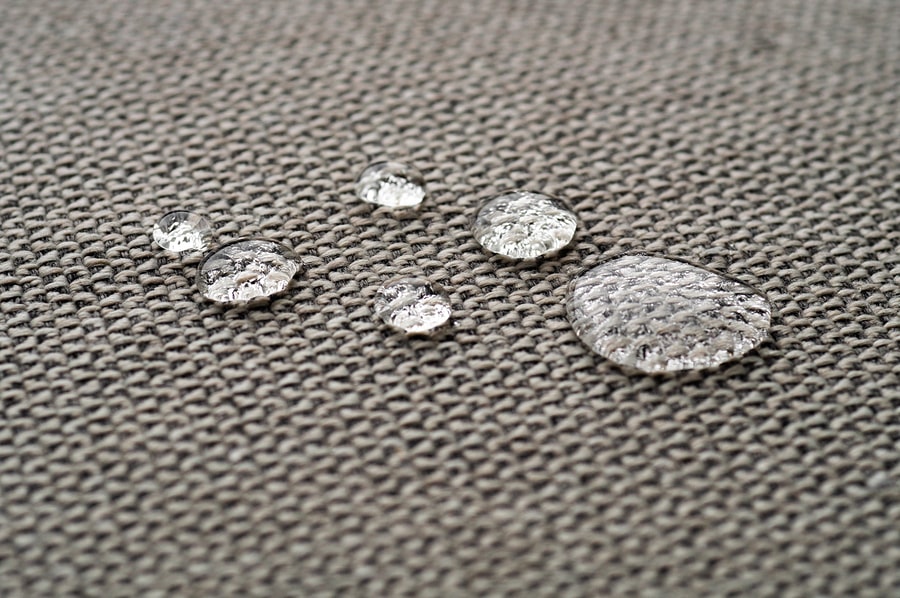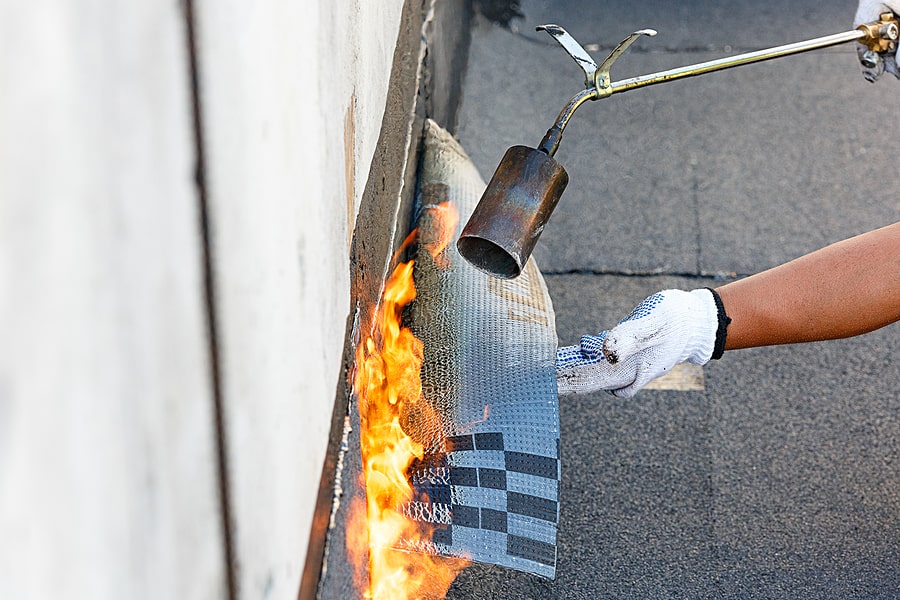08 Dec How Long Does A Waterproofing Membrane Last?

Quality waterproofing systems should last for at least 10 years. However, this is largely dependent on the type of waterproofing materials used as well as the workmanship of the waterproofing contractor.
Statistics have shown that faulty waterproofing is among the top building defects. In fact, they are also regularly cited as the reason for insurance claims against building damage. This means that it is important that you are aware of the quality of your own waterproofing system.
In this article, we cover the types of systems and workmanship that you should look to have in order to enjoy the duration of 10 years or more.
What is Waterproofing Systems?
Before we cover the different factors that determine the effectiveness of your building’s waterproofing system, we first need to know what exactly is waterproofing.
Technically, a waterproofed material is one that does not allow any moisture to pass through it. This makes it different from “water resistant” which only restricts the movement of moisture.
A waterproofing system is applied to wet areas or weather exposed surfaces of your home to ensure that no moisture penetrates or escapes. This most commonly includes your bathroom and roof.
What Makes Waterproofing Necessary In All Buildings?
As covered before, water has been cited as a top culprit in building damages. But how exactly does this happen? When water goes undetected for long periods of time, it can become a hazard in the following ways:
- Mould and mildew start to grow due to the highly moist and dark environment which is created by moisture building up behind your building’s walls. Both mould and mildew release spores in to the air which can compromise the health of individuals in the vicinity.
- Rotting structural timers due to mould and decay. Once major structural components such as bearers and beams have been compromised, the structural integrity of the building is placed in jeopardy.
- Corrosion of plumbing as certain metals oxidize with water leading to rusted pipes. This in turn facilitates further water leaks.
- Electrical fires may emerge if water reaches your electrical appliances, power sockets or wiring.

Furthermore, water is a highly mobile substance capable of reaching all sorts of spaces behind your walls. Known as rising damp, water can travel in its various states through walls, floors and masonry via capillary action. As such, even vertical upward gaps do not deter water movement.
How Workmanship Affects the Durability of your Waterproofing System
Depending on the area, different waterproofing techniques may have to be applied. For example, a bathroom shower faces a consistently high degree of moisture whereas a roof must be able to withstand a heavy downpour. The differences in water penetration situations makes it hard to generalize good workmanship.
Nonetheless, waterproofing in all of these areas follow a few simple principles that must be adhered to.
Protrusions & Joints are the Weakest Points
Firstly, the weakest point in all these areas are protrusions or where horizontal and vertical surfaces meet. At these points, singular material surfaces are broken up, leading to natural gaps. Sealants are often used to shore up these gaps, but are vulnerable to water or moisture penetration.
As such, extra attention needs to be paid to places such as:
- The area where your shower’s wall and floor meet
- Protrusions like vents from your roof
- Parts of your ceiling where pipes enter from

Fall Design & Good Drainage Are Crucial
Secondly, no matter how strong your waterproofing materials are, they cannot withstand heavy pressure from water. This makes fall design critical to the success of your waterproofing system.
Fall design refers to pathways that are designed to guide water away from surfaces and towards drainage points. Good fall design naturally leads water along the designated path with minimal water escaping it.
Where poor workmanship is involved in fall design, water will not be guided away efficiently. The extra amount of time and volume that a surface is in contact with water could lead to it being compromised in the long run.
Accompanying good fall design should be effective drainage. Ultimately, until water is drained and released outside, your surfaces will still be placed under pressure. Importantly, you need to keep your drain free from debris.
Indoor drains often become choked by hair, litter or food waste depending on which drain is in question. Meanwhile, exterior drains on your roof are a common victim to fallen leaves or a buildup of sediments.
The Correct Application of Waterproofing Membranes

Waterproofing membranes is a professional solution for preventing water leakage or seepage. Currently, two common systems of membranes are applied.
Sheet Based Waterproofing Membrane Systems
The first type of membrane is known as sheet waterproofing membranes. As indicated in its name, these sheets are premanufactured to be of specific dimensions. After which, they are sold in rolls that can be quickly deployed over the intended surface.
To bond a sheet’s adhesive to the surface as well as to join multiple sheets together, specialist waterproofing contractors apply heat to the sheets. This prevents gaps from forming between the surface and sheet as well as among the different sheets used.
When applied correctly, waterproofing professionals are able to cover large surfaces within a relatively short period of time. However, this system is rather inflexible and difficult to apply to irregularly shaped spaces. Furthermore, it struggles to cover spaces where horizontal and vertical planes meet.
Liquid Based Waterproofing Membrane Systems
On the opposite side of the scale lies liquid based waterproofing membrane systems. Sold in liquid form, these membranes enjoy much more flexibility in application since they are not restricted in size.
To apply liquid waterproofing membranes, contractors use roller brushes or spray machines to cover a surface with it. The challenge here is to retain a rather even layer of membrane application. As such, more expertise, experience and effort is required in the application of liquid membranes as opposed to sheet based membranes.
Additionally, liquid based membranes take a much longer time for application to large areas. But, they do make up for it by being suitable for covering protrusions and joints.
Getting a Durable Waterproofing System
Good workmanship coupled with strong strategic choices over the combination of waterproofing materials is the key to a durable waterproofing system.
Trust TAC Contracts for Your Waterproofing Needs
TAC Contracts is an established and trusted waterproofing and repainting contractor. Over many years we continuously provided our customers with high-quality workmanship at very reasonable prices.
Our experienced contractors and specialists can help you in identifying, analysing and resolving your waterproofing issues. We use high quality waterproofing materials and recommend the appropriate waterproofing membranes for your building.





Sorry, the comment form is closed at this time.